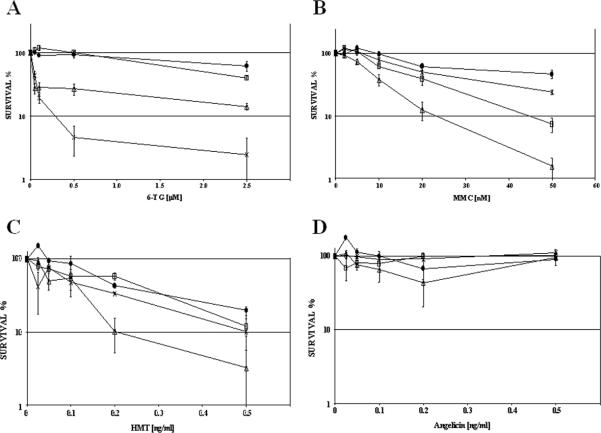Figure 3. Clonal survival of immortalized fibroblasts with Fancd2 and Mlh1 defects in addition of 6-TG, MMC, psoralen or angelicin plus UVA.
A) MLH1 complementation restores 6-thioguanine sensitivity in immortalized double mutant Fancd2/Mlh1 cells. Concurrent expression of FANCD2 made cells even more sensitive to 6-TG at concentrations of 0.5 and 2.5 μM (p≤ 0.005). B) Fancd2/Mlh1 double mutant fibroblasts show a remarkable resistance to MMC displaying clonal survival frequencies close to FANCD2 and MLH1complemented cells. While FANCD2 complementation mediates MMC resistance, expression of MLH1 greatly enhances MMC sensitivity of Fancd2-deficient immortalized fibroblasts, p<0.05 at 5 and 10 nM MMC, p=0.01 at 20 and 50 nM MMC, when compared to clonal survival of double mutant fibroblasts. C) Clonal survival after exposure to psoralen plus UVA irradiation. FANCD2 complemented and Fancd2/Mlh1 double mutant cells are resistant to psoralen/UVA ICL damage. In contrast, Fancd2 mutant fibroblasts expressing functional MLH1 displayed significantly reduced clonal growth after psoralen UVA exposure at concentration of 0.2 and 0.5 ng/ml in comparison to double mutant cells (p<0.05). D) In parallel with psoralen/UVA, cells were exposed to angelicin/UVA and subsequent clonal survival was determined. No clear differences were observed among the clonal survival of the isogenic cell lines. FANCD2 / MLH1 complemented (-×-), double mutant mock complemented (-□-), FANCD2 complemented, Mlh1-deficient (-•-), and Fancd2-deficient MLH1 complemented (-Δ-), error bars indicate standard error.

